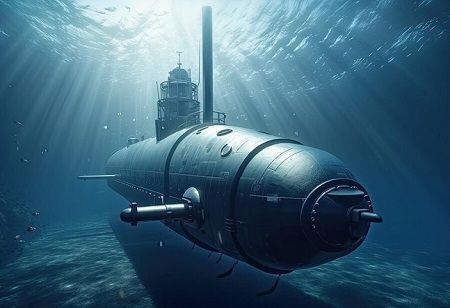A groundbreaking advancement has emerged, potentially revolutionizing underwater propulsion for submarines. Chinese scientists, led by Associate Professor Ge Yang from Harbin Engineering University, claim to have devised a solution to a decades-old challenge in submarine technology. Their innovation, termed "underwater fibre laser-induced plasma detonation wave propulsion," represents a significant leap forward.
Utilizing optical fibers, thinner than human hair, coating the submarine's surface, the technology harnesses the power of laser pulses. Remarkably, these pulses generate nearly 70,000 newtons of thrust, rivaling the force of a commercial jet engine. Such efficiency was previously deemed unattainable. Furthermore, the laser pulses vaporize seawater, inducing "supercavitation," which reduces water resistance. Theoretically, this breakthrough could enable submarines to travel faster than the speed of sound, stealthily, without the telltale mechanical noise vibrations that typically betray their presence.
Published in the peer-reviewed journal Acta Optica Sinica, the research outlines a method where high-powered laser beams pulse around the submarine from various angles. This approach not only propels the vessel but also creates a bubble layer, reducing friction and enhancing speed.
The implications of this technology are vast, particularly in stealth propulsion for submarines. However, it also raises geopolitical tensions, as the US government has imposed severe sanctions and blockades on Harbin Engineering University, where the research is taking place. This underscores the significance and potential military applications of the breakthrough within the context of escalating global competition.
The development signifies a remarkable convergence of scientific ingenuity, military strategy, and geopolitical dynamics. It represents a substantial advancement in naval technology, potentially reshaping the capabilities and strategies of underwater warfare. However, it also highlights the ethical and strategic dilemmas inherent in the pursuit of such cutting-edge advancements in military technology.

